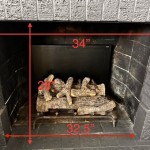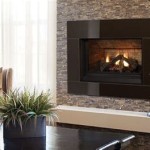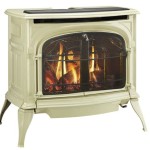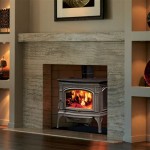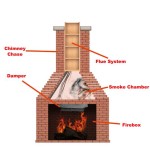No Vent Gas Fireplace Inserts: A Comprehensive Guide
No vent gas fireplace inserts, also known as ventless gas fireplace inserts, offer a convenient and aesthetically pleasing heating solution for homes without a traditional chimney. These appliances burn gas fuel and release heat directly into the room without the need for external ventilation. The absence of a chimney simplifies installation and allows for placement in various locations within a home. Understanding the functionality, safety considerations, installation process, and maintenance requirements of no vent gas fireplace inserts is crucial for making an informed purchasing decision.
Unlike their vented counterparts, no vent gas fireplace inserts are designed to burn fuel so completely that minimal byproducts are released into the air. Manufacturers employ sophisticated combustion technologies to achieve this near-complete combustion. These technologies typically involve engineered burner systems, oxygen depletion sensors (ODS), and catalytic converters designed to minimize emissions of carbon monoxide, nitrogen dioxide, and unburned hydrocarbons. The ODS is a critical safety feature that monitors oxygen levels in the room and automatically shuts off the gas supply if those levels drop below a safe threshold, preventing carbon monoxide poisoning. The effectiveness of these systems depends on proper installation, regular maintenance, and adherence to manufacturer guidelines.
The efficiency of no vent gas fireplace inserts is generally higher than traditional wood-burning fireplaces or vented gas fireplaces. Because the heat is released directly into the room, there is minimal energy loss through a chimney or vent system. This translates to lower fuel consumption and potentially reduced heating costs. However, the actual efficiency and cost savings will vary depending on the size of the unit, the fuel type used (natural gas or propane), the insulation of the home, and the local climate.
Understanding the Key Benefits
No vent gas fireplace inserts provide several compelling advantages over traditional fireplace options. One of the most significant benefits is their ease of installation. The absence of a chimney requirement means that they can be installed in almost any room of the house, opening up possibilities for adding warmth and ambiance to spaces where a fireplace was previously impractical. This eliminates the need for costly and disruptive chimney construction or modification.
Another key benefit is their efficiency. Because no heat is lost through a chimney, no vent gas fireplace inserts are typically more efficient than traditional fireplaces. This can translate to lower energy bills and a reduced environmental impact. The radiant heat they produce provides a comfortable and even warmth, making them an effective supplemental heating source. This focused heat output can also help to reduce reliance on central heating systems, potentially leading to further energy savings.
Finally, no vent gas fireplace inserts offer a variety of aesthetic options. They are available in a wide range of styles, sizes, and finishes, allowing homeowners to customize the look of their fireplace to match their existing decor. From traditional designs with realistic logs to modern styles with sleek lines and glass fronts, there is a no vent gas fireplace insert to suit almost any taste. Many models also offer features such as adjustable flame height, remote controls, and programmable timers, adding to their convenience and versatility.
Safety Considerations and Operational Guidelines
While no vent gas fireplace inserts are designed with safety in mind, it is essential to understand the potential risks and adhere to safety guidelines. One of the primary concerns is the potential for carbon monoxide buildup. Although modern units are equipped with ODS systems to mitigate this risk, regular maintenance and proper ventilation are still crucial. Following all of the manufacturer's recommendations regarding proper operation and care will minimize risk.
It is imperative to ensure that the fireplace is installed by a qualified professional who is familiar with local building codes and regulations. This ensures that the appliance is properly connected to the gas supply, that clearances to combustible materials are maintained, and that the ODS system is functioning correctly. An improperly installed fireplace can pose a significant safety hazard.
Furthermore, it is important to have a working carbon monoxide detector installed in the room where the fireplace is located. This provides an additional layer of protection by alerting occupants to the presence of carbon monoxide even if the ODS system fails. Check the batteries in the carbon monoxide detector regularly to ensure it is functioning properly. Also, maintaining a clear area around the fireplace, free from flammable materials, is crucial for preventing fires.
Installation Procedures and Maintenance Requirements
The installation of a no vent gas fireplace insert is a multi-step process that requires careful attention to detail. The first step is to choose the right size and type of unit for the room. Factors to consider include the room's square footage, the desired heat output, and the available space for installation. Once the unit has been selected, the installation area must be prepared. This may involve removing an existing fireplace or clearing a space on a wall.
Next, the gas supply line must be connected to the fireplace insert. This should be done by a licensed plumber or gas fitter to ensure a safe and leak-free connection. The fireplace insert is then placed in its designated location and secured. It is essential to follow the manufacturer's instructions carefully during this process to ensure proper alignment and stability.
Finally, the gas line is tested for leaks, and the fireplace is tested to ensure that it is functioning correctly. The installer should also provide instructions on how to operate and maintain the fireplace. Regular maintenance is essential for ensuring the safe and efficient operation of the fireplace.
Maintenance tasks include cleaning the burner assembly, inspecting the ODS system, and checking the gas connections for leaks. The burner assembly should be cleaned regularly to remove any dirt or debris that may interfere with combustion. The ODS system should be inspected periodically to ensure that it is functioning correctly. A visual inspection can confirm there are no blockages or damage. Gas connections should be checked for leaks using a soapy water solution or a gas leak detector. Any leaks should be repaired immediately by a qualified professional.
Additionally, it is important to have the fireplace professionally inspected and serviced at least once a year. A qualified technician can identify potential problems and perform necessary repairs to ensure that the fireplace is operating safely and efficiently. Follow the manufacturer's recommendations for specific maintenance tasks and schedules. Neglecting regular maintenance can lead to performance issues, safety hazards, and reduced lifespan of the appliance.
Selecting the right no vent gas fireplace insert requires careful consideration of several factors. The size of the room is an important consideration. A unit that is too small may not provide enough heat, while a unit that is too large may overheat the room. The desired heat output should be carefully matched to the room's square footage and insulation levels.
The style of the fireplace insert is another important consideration. Choose a style that complements the existing decor of the room. No vent gas fireplace inserts are available in a wide range of styles, from traditional to modern. The fuel type used should also be considered. No vent gas fireplace inserts are available in both natural gas and propane models. The choice of fuel type will depend on the availability and cost of each fuel in your area.
Finally, consider the features offered by different models. Some models offer features such as remote controls, programmable timers, and adjustable flame height. These features can add to the convenience and versatility of the fireplace. Also, check the warranty offered by the manufacturer. A longer warranty can provide peace of mind and protection against potential defects.

Vent Free Inserts White Mountain Hearth
:max_bytes(150000):strip_icc()/ventless-gas-fireplaces-4160746-hero-f9d4bdcd9bd446eb84406de306f790ba.jpg?strip=all)
How To Pick Out A Ventless Gas Fireplace

Vent Free Inserts White Mountain Hearth

Considering A Ventless Gas Fireplace Here S What You Need To Know Bob Vila

Superior 36 Inch Vent Free Circulating Gas Firebox Vrt3536 North Country Fire

Vent Free Gas Fireplaces Inserts Stoves Napolis Godby Hearth And Home

White Mountain Hearth By Empire Vent Free Gas Fireplace Insert Innsbrook 20 Small

Monessen Acuf32 D Attribute 32 Inch Vent Free Circulating Firebox With Gas Log Set

Duluth Forge 27 In W 26000 Btu Black Vent Free Dual Burner Gas Fireplace Insert And Remote The Inserts Department At Com

Monessen Solstice Traditional Vent Free Fireplace Insert Fine S Gas
Related Posts


